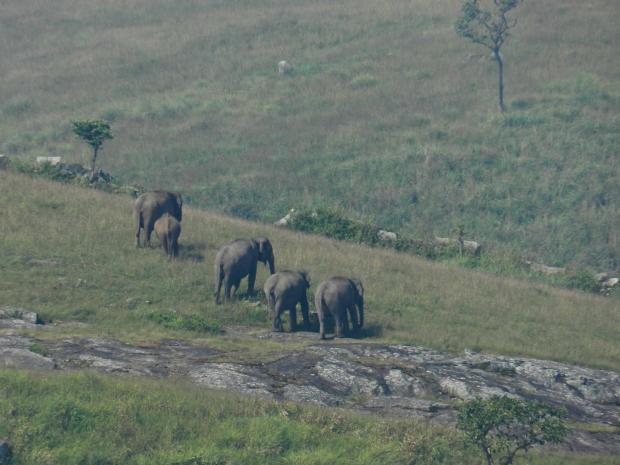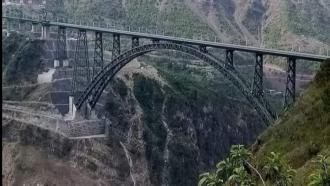
Photo: Vidisha Kulkarni/ Research Matters
A recent collaborative study by the Sigur Nature Trust, Masinagudi, with its partner organizations, has identified a network of elephant corridors in the Nilgiris Biosphere Reserve using a combination of novel techniques in landscape ecology. The results of this study, led by Dr. J P Puyravaud of the Sigur Nature Trust, could not only help targeted efforts to protect endangered Asian elephants, but also help minimise the damage movements of elephants cause to human settlements and activities in the nearby regions.
Habitat fragmentation is a major contributing factor towards decline in the population of large mammals. Nevertheless, at least in some regions, habitats are connected by narrow stretches of land, facilitating movement and mixing of populations. Identifying and studying these corridors that connect different habitats, is of paramount importance in the conservation and protection of mega-fauna. The Nilgiri Biosphere Reserve (NBR), which includes the Mudumalai, Mukurthi, Sathyamangalam, Nagarhole, Wayanad, and Bandipur national parks, spans over 6000 km² and forms a link between the Eastern Ghats and the Western Ghats. The park supports the largest population of Asian Elephants in the wild and many earlier studies have established the importance of NBR to the survival of the Asian elephant and the Bengal tiger.
Dr. Puvravaud and his collaborators Dr. S.A Cushman, Dr. P. Davidar and Mr. D. Madappa set out to map the areas in the reserve where elephant activities were common. They used path-modelling techniques in landscape ecology to map elephant corridors across Nilgiris Biosphere Reserve. The network they observed is very much in agreement with the observed elephant movements in the region. “Till now, elephant corridors were located by experts. There were several problems with this. Firstly, experts can’t go everywhere in a given region and secondly, they tend to choose corridors on the basis of their own experience. Landscape ecology - ecology at the scale of a landscape, does not have these problems. Corridor evaluation is done automatically over an entire region,” explains Dr. Puyravaud talking about the advantages of their approach.
The study has succeeded in not only removing subjectivity in identifying corridors, but also has managed to recognise patterns which were previously overlooked. Conventionally, elephant corridors were thought to be independent from each other. But, this study shows that corridors indeed form a network. “If you observed maps with expert corridors, you would see a few corridors spread across the landscape. Often, it was difficult to understand how they operate. It was the equivalent of describing blood circulation with some arteries here and some veins there. Landscape analysis, on the contrary, gives a full view of the entire system. Corridors form a network in and out of protected areas,” says Dr. Puyravaud.
The corridor network also has an inherent hierarchy with some corridors being more important than the others. The existence of hierarchy in corridor network suggests that targeted actions in a few areas might have disproportionately positive influence on the conservation of the Asian elephants in the region. For instance, increased protection of important corridors could provide increased movement and mixing of population.
This hierarchy also helped the researchers identify the corridors that are important and cross through several problematic areas. This includes the corridor from Nagarahole National Park to Kallar, passing through a maze of villages from Masinagudi to Sigur, which was given the status of 'Elephant Corridor' by Tamil Nadu Forest Department in 2009, among many others.
The easily interpretable results of this study can definitely be of great help in improving the connectivity of Asian elephant habitats and thereby, increasing their numbers, in an important landscape like the Nilgirs Biosphere Reserve. “This kind of study is very important because it shows that a species’ life is not only individuals, but also how these individuals move to feed and reproduce. If corridors are not maintained or restored, small populations become separated and the chance of extinction is higher”, remarks Dr. Puyravaud.
























